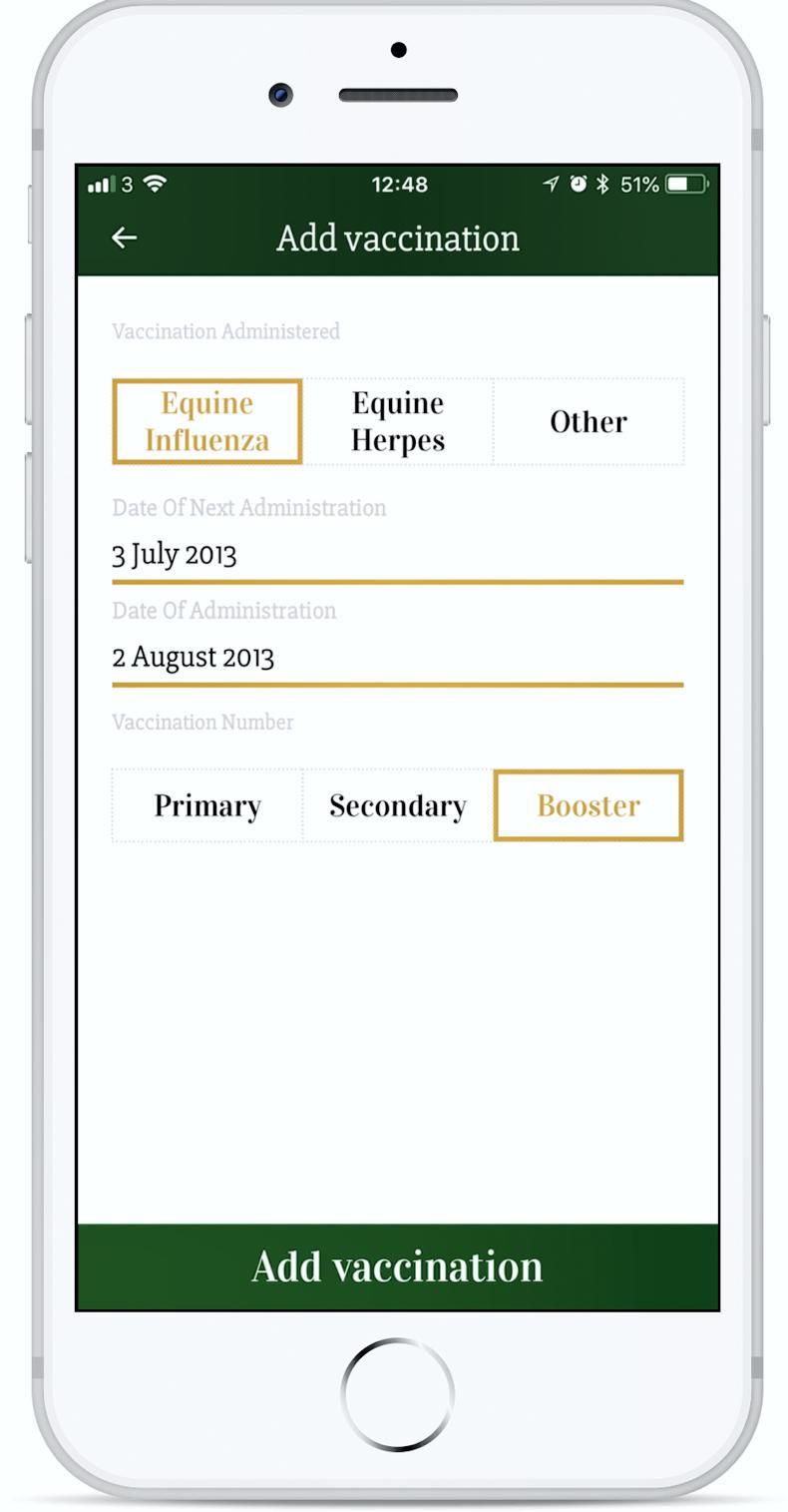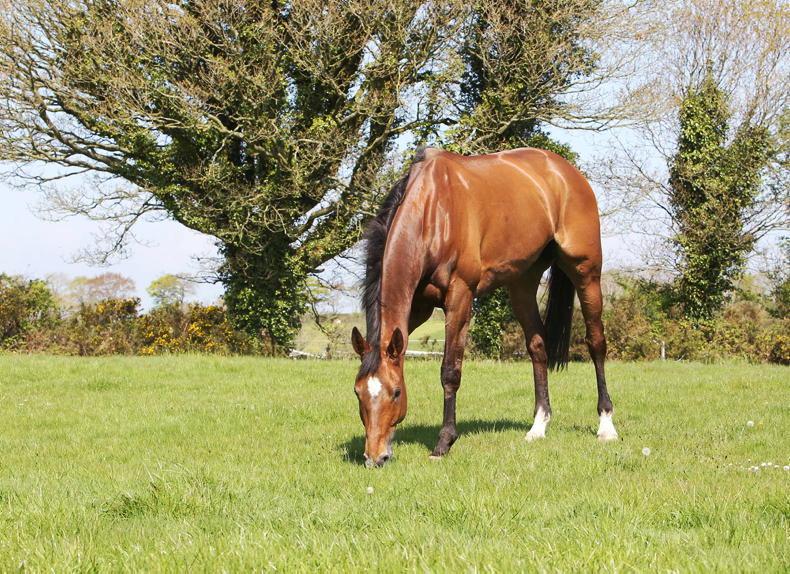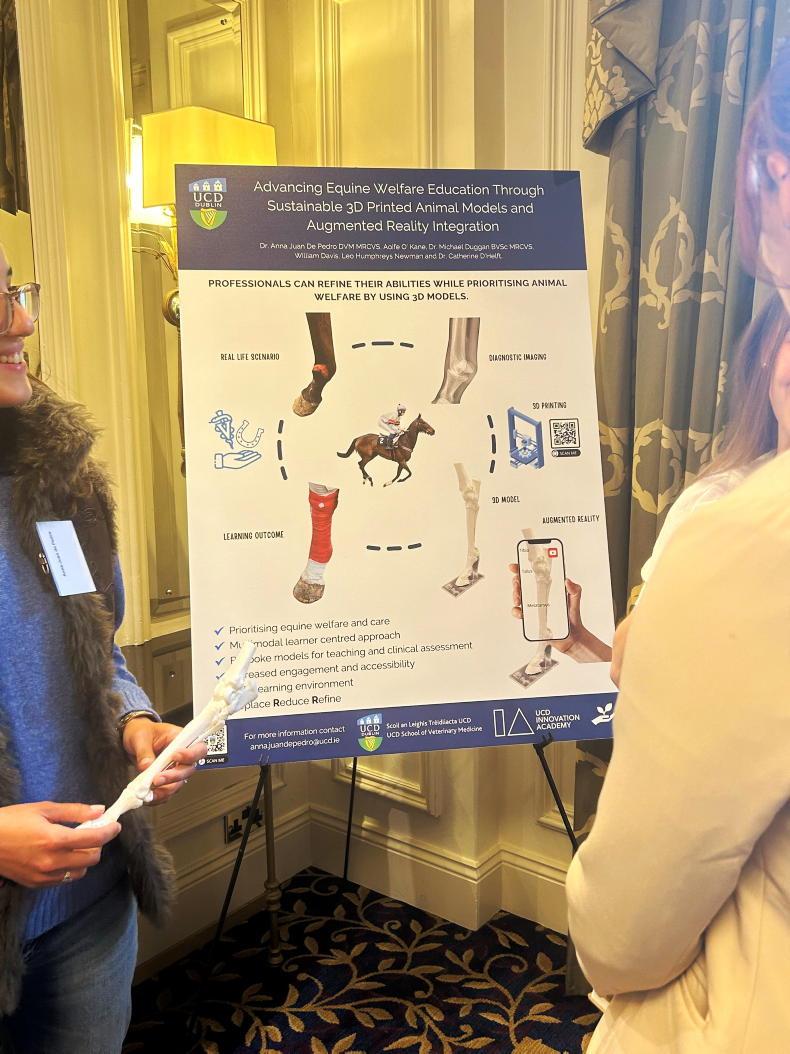HORSE racing endures a relentless welfare lens on it, yet it is often the innovators in the thoroughbred field that pave the way for welfare progress for the entire equestrian sector. Last Friday saw the inaugural Horse Racing Ireland Equine Welfare Symposium “Changing Stride, The Way Ahead For Horse Racing Safety and Care” take place at the Keadeen Hotel, Co Kildare. The event was sold out and had a waiting list for tickets, which in itself perhaps paints a portrait of the interest in equine welfare within the current racing and equestrian community.
Following a warm welcome from HRI CEO Suzanne Eade, the busy schedule was broken up into four sessions and introduced by equine welfare and bloodstock director at HRI, John Osborne. In the first presentation we heard from Dr Tamsin Furtado of Liverpool University, who shared ‘The Horses Are The Easy Bit: Human Behaviour and Why It Matters’.
The crux of Furtado’s lively presentation was the premise that if we want to change the well-being of horses, we must first change the actions of the people around them. All well and good but not so easy according to social scientist Furtado, who demonstrated clearly how humans find it very difficult to make changes to their habits. The question for the sector from Furtado was how do we actively put in place strategies for human change within the sector and how do we positively support that as a community?
Equitation science
Veterinary behaviourist Dr Orla Doherty was also interested in affecting positive change in her presentation “Racing and Beyond”. Doherty discussed the importance of equitation science which promotes an evidence-based understanding of the welfare of horses in training and competition, by applying quantitative scientific methods that can identify what techniques are ineffective or may result in equine suffering.
Doherty presented a new way to think about equine psychology and also insight into training racehorses with a consciousness of the career they are likely to have beyond racing: a second career for a racehorse is likely to last 2-5 times the duration of its racing career.
Based on research in the field, Doherty offered a pragmatic proposal (and what felt a little like a gauntlet) to those gathered. She highlighted some of the proven challenges for training thoroughbreds post track, such as acceleration at rein gather up or standing still to mount. She suggested these issues could be overcome by laying new training foundations via structured training at the beginning of the racehorse’s ridden career for the benefit of its lifetime whatever that may become post track.
Doherty laid out a proposed format for new modes of training for both people (short courses, certification and refresher courses) and for horses (regular training throughout its racing career with a refresher on retirement from racing). Smart ideas from one of Ireland’s very best horse-forward thinkers.
Welfare assessments
Dr Rachel Annan’s research “A Day In The Life Of A Racehorse” acknowledged that the racing industry is already doing a good job but that there are areas for improvement. Annan made the pertinent point that horses race around five times a season, which means they are at home for around 360 days of the year and it is our job to make sure they are happy.
Annan and her colleagues and trainees employed welfare assessments across numerous yards on over 700 racehorses, with the main findings of the study showing positives such as the physical health of racehorses was generally good, 94% recorded an ideal body conditions score and no horses had signs of hoof neglect. The positive effect on horse behaviour with stable windows was also highlighted.
The research did flag up some more concerning statistics however, such as only 54% of horses had physical social contact, 14.5% displayed some stereotypical behaviours such as weaving and 12.9% had mouth corner lesions.
Another important finding from Annan’s research proved nasal discharge was not influenced by increased social contact, a win for those who agree that horses should all have such contact. The turnout statistic provoked a lively debate on whether or not turnout could or should become mandatory for all racehorses. This was one of the only times the room felt some friction as some, including a champion trainer, were not in favour of racehorse turn out for every horse. Arguments against included the opinion that some racehorses are not comfortable turned out, that they are “happy enough in their stable”, some thought it was too high risk for injury, whereas others maintained there just isn’t the infrastructure in most yards for turnout. Time will tell on this one I’d say.
Performance data
Then came the technologists for session two. Groundbreaking projects which are changing the safety and care of horses around the globe. RaceiQ known predominantly as a sports statistics business, delivered a convincing presentation on how racing could harness the power of their new in-race performance data to improve welfare outcomes for racehorses.
Irish racing now has tracking data for every race, both flat and jumps racing, but as yet this information is not harnessed into welfare insights. Information such as stride length and the thoroughbred’s speed before and after jumps, when combined with veterinary records and horse biometrics, could prove invaluable information to understand not only each racehorse performance individually but also the safety topography of the racecourses themselves.
Dr Graham Adams of the Irish Horseracing Regulatory Board (IHRB) gave a thought-provoking insight into the pre-race inspections carried out by their vets and asked the question, what can we do better? Adams talked the gathered audience through the Suitability To Race Programme and their role as regulatory vets to independently ensure and assure the public and the sector that horse safety and welfare always come before anything else, on and off the track. It was certainly an eye-opener to see the list of checks undertaken - lameness definitions in particular were many.
Adams shared the IHRB’s plans for 2024 which included risk factor modelling, the development and instigation of a race day fatality review, linking with Irish research teams, a seminar for trainers on the Equine Injury in Irish Racing Risk Reduction Project, further engagement with racecourses and research into training practices.
Gait analysis company Sleip AI were also present to showcase their groundbreaking app which detects horse gait asymmetries. The app has been developed to support vets in lameness assessments and diagnoses. The app has also been used more recently by racehorse trainers to monitor a horse’s movement over longer periods, flagging up any small changes long before race day and possibly avoiding safety risks. The app is also being explored beyond racing by the international governing body of equestrian sports, FEI, for potential use across all equestrian sport.
Ireland’s Pierce Dargan gave an impressive and confident overview of Equine Medirecord, which has digitised and automated regulatory compliance for the global racing industry. Utilised by the likes of Willie Mullins, since 2018 over 1,000 inspections have been made with a 100% compliance across seven countries thanks to this innovation in record keeping for racehorses. Medirecord is a true gamechanger for racing and the management of racehorses.
Instantly read
Dr Kevin Corley followed with Irish company EquiTrace where rapid access to timely information can be kept in one central location to improve horse medical care. EquiTrace offers a solution to the 75% of yards that still use pen and paper records, the 50% who struggle to find employees, saving 16 hours of lost productivity per week. EquiTrace works in conjunction with Merck Animal Health USA’s Bio-Thermo™ microchips, allowing horse care professionals to instantly read, graph and monitor a horse’s temperature.
Finally, another Irish company, Equimetrics who are an equine veterinary medical device developer, focused on providing truly innovative solutions for the remote monitoring of horses for vets, equine hospitals, owners, trainers and caregivers. Annemarie O’Brien, CEO of Equimetrics and also married to champion trainer Aidan O’Brien, gave an engaging talk on their rechargeable biometric sensor device which has an integrated microchip reader and an onboard ECG with 24-hour capability.
Discussion and debate
It wasn’t hard to feel somewhat optimistic after the first two sessions, such thinking and such great talent all focused on making both life and sport better for the people and horses within the racing community. It even felt possible that all of these innovators could one day work together to integrate their technologies, easier said than done of course.
The symposium positivity was palpable over lunch, with discussion and debate flowing from every table, the noise levels were testament to the buzz of the conversations. There was also a wonderful display of posters highlighting some of the country’s most exciting equine organisations and academic projects.
The third session of the day was ‘The Tack Room’ – a discussion panel with Mark MacRedmond of Anglesey Lodge Equine Hospital, Dr Tamzin Furtado and Dr Graham Adams, chaired skillfully by Michael Sheahan MVB of DAFM. The panel covered numerous questions from the floor on topics as varied as the timing of the equine census, anti-doping, medications, practice fences, welfare washing, padded hurdles, traceability and anthelmintics.
After the rigor and passion of the first three sessions, John Osborne wrapped it all up with a heartfelt thanks reminding those present that welfare is not a breed-specific challenge, it’s for the whole equine community. He also spoke of change. Namely, that small changes in our use of language and small changes in our habits, when multiplied by the tens of thousands who work in and around our horses in Ireland, become monumental changes.And with that, we all went racing at the Curragh, where the conversations remained deep and on topic well past the last race.




 This is a subscriber-only article
This is a subscriber-only article
 It looks like you're browsing in private mode
It looks like you're browsing in private mode













SHARING OPTIONS: